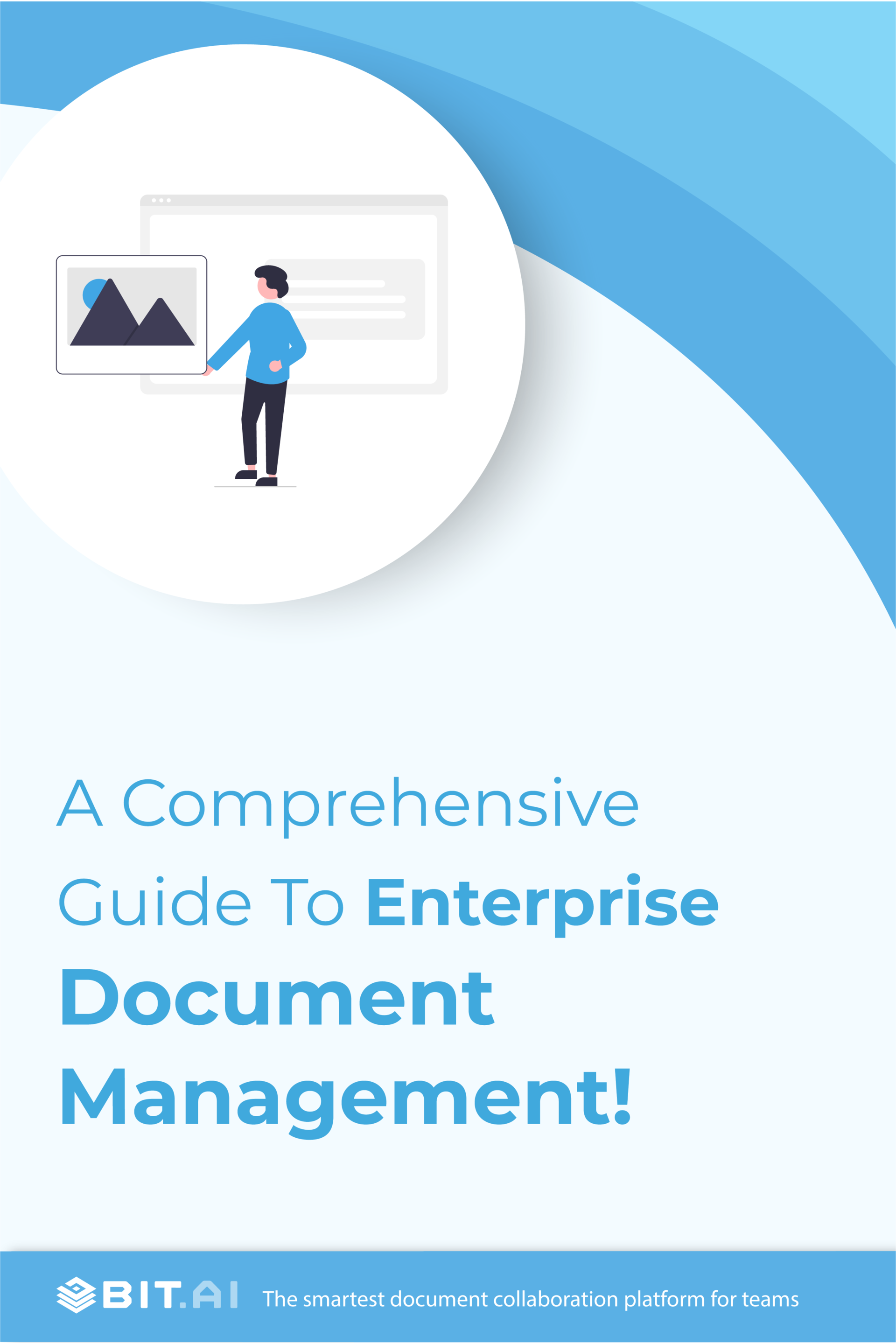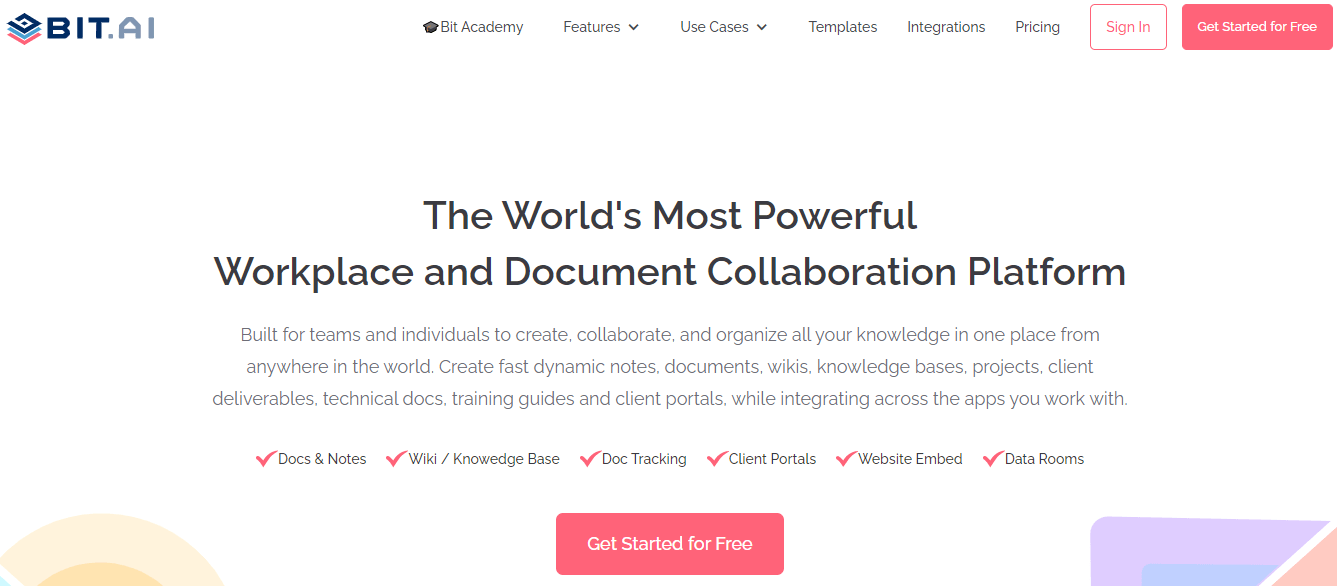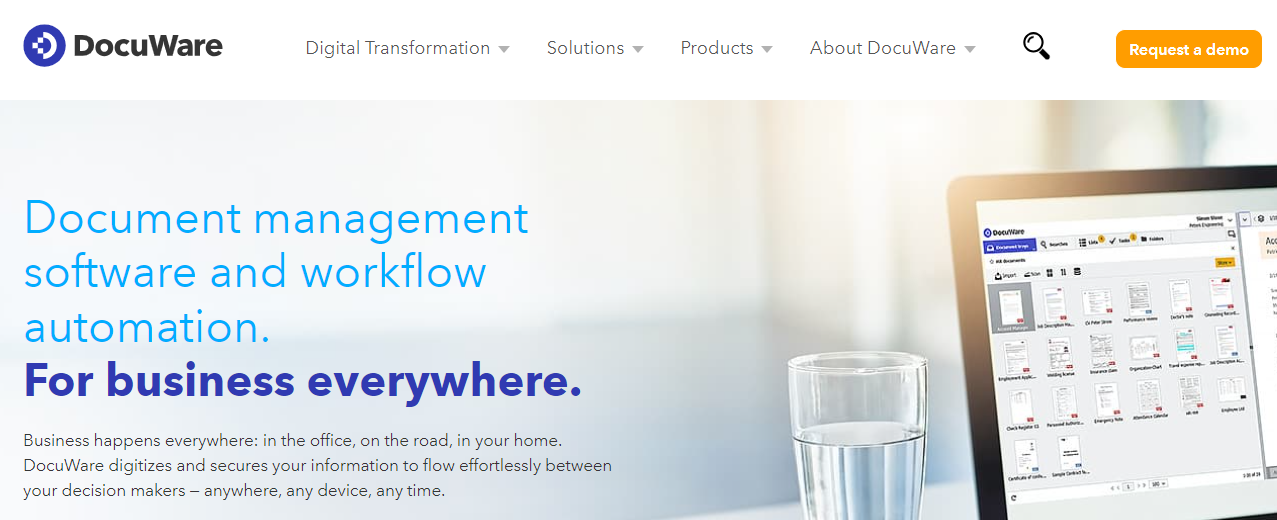Attention to all paperwork enthusiasts in the office! Did you know that enterprise document management is the ultimate power move in the world of business? It’s like fighting against the chaos of scattered files and the headache of this repeated question, “Where did I save that?” Enterprise document management is like a world where all the necessary documents have their own digital home and are easily accessible.
One cool fact about document management is that it saves trees by reducing paperwork but not just that, it’s also about optimizing operations and enhancing productivity. So, stick around, folks, and let’s unlock the treasure of wisdom that awaits you in this article. It’s time to rule your office kingdom by conquering paper mountains.
What’s Enterprise Document Management (EDM)?
Listen up, document warriors! In the vast universe of business, where paperwork rules, a cool tool exists: enterprise document management. It’s like a trusty partner, equipped with superpowers to deal with the chaos of documents and bring productivity and efficiency.
So, let’s understand what exactly is enterprise document management. Consider EDM as the art and science of recording, storing, organizing and retrieving all the important documents in an organization. From necessary reports and invoices to business contracts, it’s an efficient system ensuring every piece of information finds its right place.
But the role of EDM extends beyond just organization. Without an enterprise document management system, organizations may fail to operate seamlessly. There’s always a risk of losing important files and documents, leaving your team bewildered and delaying project deadlines.
But you don’t have to worry because enterprise document management is there to save the day. It eliminates the need to search the entire file cabinet to get that one important paper. Now, with a few clicks, you can access any document anywhere and anytime. This enhances collaboration among teams as they get the superpower to effortlessly share and collaborate on files, eliminating the need for email attachments and the headaches of waiting for replies.
Still not convinced? Let’s paint a picture with some interesting stats. Did you know that employees spend 1.8 hours of their day searching for misplaced documents? That’s one-fifth of our precious work hours wasted on just searching for information that should be easily accessible. And not just this, IDC Research found that an average enterprise wasted $2.5 to $3.5 million per year searching and re-creating lost documents and information.
So, don’t let your business become a jungle-covered with papers. Welcome the power of enterprise document management in your organization and begin a new era of efficiency and productivity. Stay tuned for more insights and tips as we move further in our journey of managing documents, where next, we’ll discover how exactly enterprise document management works.
How Does Enterprise Document Management Work?
Enterprise document strategy enables an organization to have a clear set of steps that they can follow to create a plan for their document management strategy. They can use the EDM strategy:
- To record, process, recheck, store, retrieve and delete a document.
- To decide when the business should complete each step.
- To determine how to adjust each step to maximize efficiency.
The document management lifecycle consists of several processes, and it is often time-consuming to follow each action. This is when document management software comes to the rescue, automating all the processes for your organization and hence improving productivity. It helps the enterprise create a single view of all the documents and provides necessary control and monitors tools to enhance the workflow. You can use an EDM to capture a document by scanning the physical document in paper form or downloading the digital version of the document.
Imagine a scene where you receive an important report or contract via email. Normally, you’d store that important document in your desktop’s internal storage. Still, with enterprise document management, you can easily capture the document, download its digital version and store it securely in the document management system securely. You can tag and index the document using relevant keywords and metadata for fast retrieval through keywords or short phrases. And this ends the constant need of trying to find the needle in a haystack when you don’t even know if the needle exists.
So, fellow reader, as of now, we have a good idea of what exactly is enterprise document management. Let’s understand deeply why it is so important for businesses. In the next section, we’ll learn how businesses can benefit from enterprise document management and why it is crucial for maintaining productivity and efficiency in operations.
Why is EDM Important?
Did you know that every filling cabinet consisting of four drawers holds 10k to 12k documents, occupies floor space of around nine square feet, and costs $1500 yearly to the organization? An average organization has a vast amount of information in both digital and paper format, which the employees and users may store in various locations such as their smartphones or desktops, shared drives, email inboxes and filing cabinets.
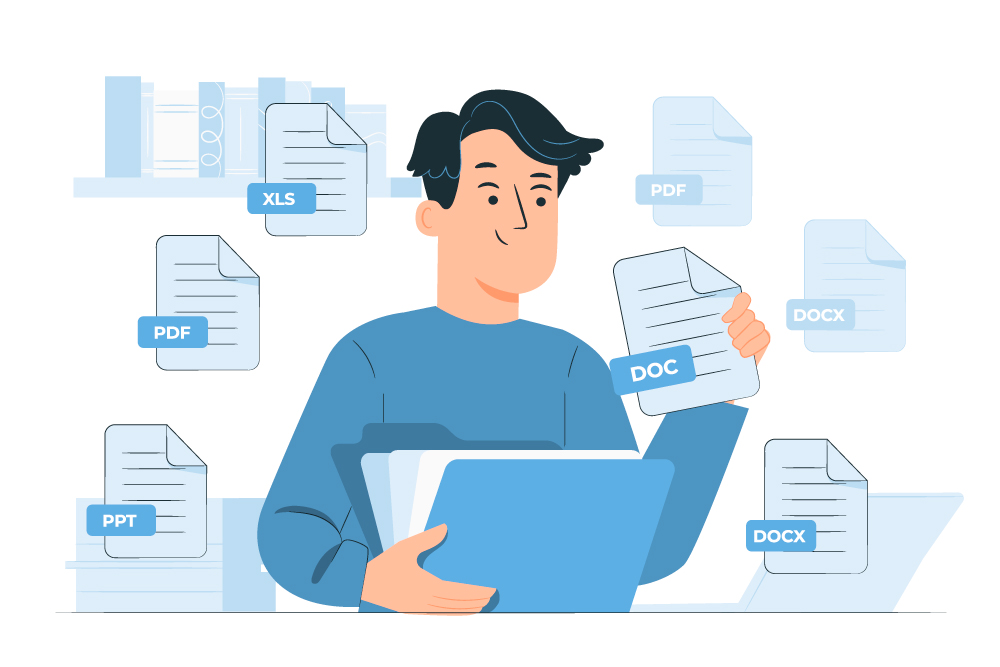
Storing files physically comes with the risk of getting lost, damaged or stolen. Also, storing files at different locations can prove to be chaos as one can forget where he/she has stored the document when they need it.
That’s when an EDM comes and offers various benefits over the physical storage of data. Some of these benefits are:
- Reduces the expenses and need for physical data storage that needs regular maintenance.
- Removes the risk of damage caused by unforeseen circumstances like fire or flood, which can destroy physical files.
- Comes with a data backup feature that provides organizations with a backup of their documents and information.
- Offers an easy search feature and centralized file storage. Users can easily find a document using keywords or phrases related to it whenever and wherever they want.
- Can integrate with different useful applications, which include content management systems, Salesforce and Microsoft Office.
- Reduces bottlenecks and helps to maintain an organized workflow through security features and version control.
After understanding the importance of EDM, let’s move on and discuss the two terms that people often confuse to have the same functionalities but are actually different. Stay tuned and read the next section to learn more.
EDM Vs Enterprise Content Management
The enterprise document and enterprise content management (ECM) systems may sound similar and share a few similarities, but these are not interchangeable terms. These two platforms come with several significant differences.
Enterprises usually use EDM to go paperless and digitize their filing systems. It focuses on storing, tracking, reviewing and retrieving electronic documents like PDFs, word documents, Ms Excel and PowerPoint files. Businesses may use a document management system to organize structured content like paper and electronic documents.
Whereas an enterprise content management system is a more advanced means of managing and storing an organization’s content and documentation.
An ECM can include all the functions an EDM can perform, like digitizing and organizing data into an easily searchable format. But it comes with the added advantage of more focus on the data than individual documents. ECM comes with the advantage of handling not only structured content but also unstructured ones, such as web pages, social media, invoices, audio and video files and purchase receipts.
EDM is a version of an enterprise content management system, and an ECM requires EDM to function properly.
You must be clear about the differences and similarities between EDM and ECM. Now it’s time to look at the types of enterprise document management systems. Dive into the next section to explore more.
Types of Enterprise Document Management Systems
Get ready to learn about the types of enterprise document management systems and explore each of them briefly. EDM comes in different types to cater for the needs of different organizations. From the smooth and easy cloud-based systems to the tough and customizable on-premises solutions, there’s a choice for businesses having different demands. Join us on this enlightening journey as we discover the secrets of different types of EDM and find the perfect match for your business.

The main feature of an On-premise document management system is that it enables enterprises to use their storage and take care of their maintenance. Such businesses are responsible for the security of their information and documents.
One of the major advantages of using this type of document management system is that they don’t rely on the Internet for their functioning, and even if the Internet connection goes down, the users can still access their documents.
But it also has certain limitations. One of the biggest downsides of using on-premise document management software is its large upfront cost and expenses to update the software regularly. The users must also manually back up the data independently, as data backup is not automated. So, if the person using on-premise document management forgets to back up the data, they may risk the important documents.
As suggested by its name, a cloud-based document management software is accessible to businesses online. To store the data in the cloud, the cloud provider charges a fee that can be based on a monthly or yearly basis; in return, the maintenance and software update is their responsibility. Because of this, a cloud-based EDM is less expensive, and there are no large upfront costs.
It also offers the feature of automatic backup so the users can enjoy their time and don’t have to worry about frequently backing up their documents. One of the biggest drawbacks of using a cloud-based system is that it only works whenever there is an internet connection. So, if the internet connection fails, the users can not access the files, no matter how much they need them.
With this, our discussion on the types of enterprise document management systems is over. But wait, don’t leave this enlightening party just yet! We’ve scratched the surface of document management wonders, but one important section remains.
How can we say goodbye without mentioning the best enterprise document management systems? In the next part, we’ll explore these interesting tools and their pros and cons. From the tools that can organize your documents with the precision of a doctor to the ones that make finding files and documents as easy as ordering pizza, we’ve got it all. So, read on.
Best Enterprise Document Management Software
Here comes the most interesting part of the discussion, the best enterprise document management softwares and tools that will revolutionise your document management world. So let’s begin.
 1. Bit.ai
1. Bit.ai
Bit.ai is an all-in-one knowledge management and document collaboration platform designed for the modern-day workplace. Bit’s platform helps teams create, collaborate, share, track, store and manage knowledge in one place.
Bit allows everyone to collaborate in real-time and create documents, brainstorm ideas, share digital and media assets, share knowledge, and get work done collaboratively.
On Bit, you can easily create multiple workspaces and folders around projects, teams, departments, and clients to store and manage information organizationally. It ensures that the right team members can access the right documents at the right time!
You can create interactive living documents, manuals, notes, knowledge bases, and to-do lists within each workspace. The best part? Bit.ai integrates with over 100+ web applications, such as Google Drive, OneDrive, YouTube, Airtable, Loom, Miro, LucidCharts, etc., so you can embed all your important digital content into a Bit document and share it with others.
That’s not all! Bit’s real-time collaboration features allow you to easily collaborate and simultaneously work together with multiple people while creating documents. This means anyone with editor access to the documents can edit, add, and proofread documents in real-time.
Bit also offers a smart search functionality in which users can search and find documents, files, reports, images, etc., quickly and easily across all of their workspaces. Moreover, Bit supports features like document tracking, password protection, workspace permissions, locked documents, etc., that work with your company’s workflows.
So, with these amazing features and security, you can trust and use Bit.ai for your complete enterprise document management.
 2. DocuWare
2. DocuWare
DocuWare is a cloud-based document management and workflow automation software that allows businesses to digitize documents in a secure and easily accessible position. Its powerful search features make finding files a breeze. It also comes with its pros and cons, given below.
Pros:
- Comes with mobile support.
- Can manage a wide range of documents and files.
Cons:
- Little expensive for smaller organizations.
- Limited integrations are offered.
 3. Microsoft SharePoint
3. Microsoft SharePoint
By using Microsoft SharePoint, users get document management and collaboration capabilities. It offers a centralized repository for documents and other necessary features like version control and seamless collaboration. It also enables businesses to create custom metadata fields that align with the organization’s goals and needs.
Pros:
- Is easily available separately or with Microsoft Office 365 package.
- Provides features to govern data with the help of customizable workflows and permission control.
Cons:
- Complex learning curve that may require more staff training.
So these are the best enterprise document management softwares that you can use to manage your documents seamlessly and enhance productivity. Now go on and manage your documents like a pro. But wait, don’t miss the conclusion, where we have summarized the entire discussion.
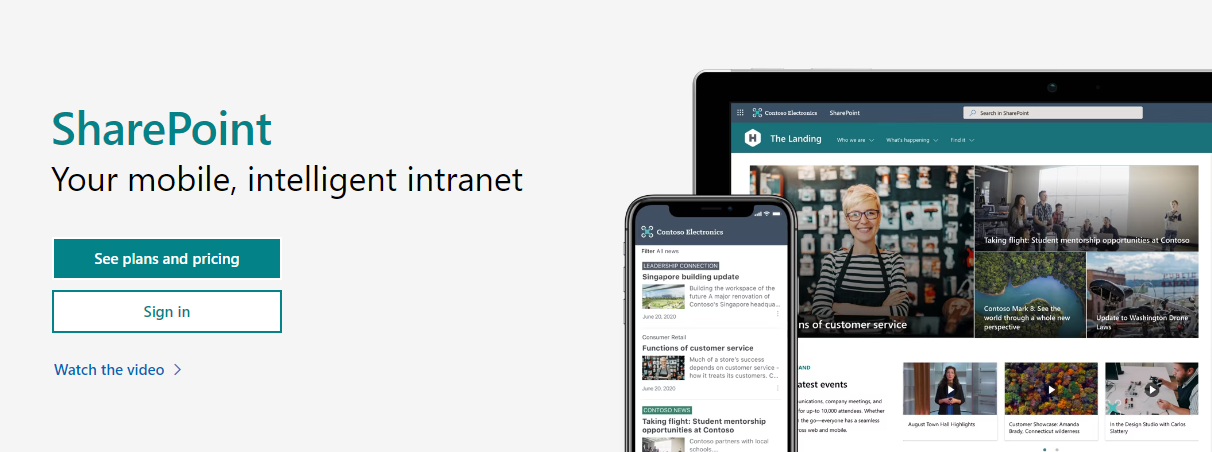
Conclusion
And with that, fellow conquerors of the document chaos, we’ve reached the end of our enterprise document management journey! We’ve explored the working of enterprise document management, discovered its types, and even looked into the world of top-notch enterprise document management softwares. But before you say goodbye, here’s a secret tip: utilize the power of Bit.ai to manage your documents and files stress-free like a pro! Its user-friendly interface, collaboration superpowers, and organization skills are the ultimate weapons against unorganized documents. Bit.ai: Where documents find their happy place!
Further Reads:
Everything You Need to Know About Content Management Systems!
Contract Management Software: A Guide To Taking Control of Contracts!
Contract Management: Best Practices for Maximizing Profitability!
The Benefits of Contract Documents in Project Management!
Knowledge Management Process: A Comprehensive Guide!
6 Crucial Financial Documents For Every Organization!
